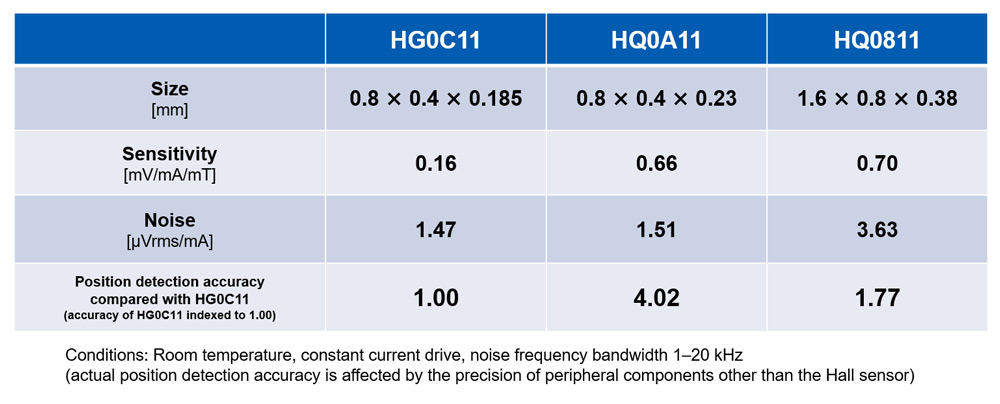News: Microelectronics
4 December 2024
AKM ships its smallest and thinnest InAs Hall element, with volume shrunk by 85%
Japan-based Asahi Kasei Microdevices (AKM, a member of the Asahi Kasei Group’s Material sector) has begun mass production and shipment of its next-generation indium arsenide (InAs) compound Hall element, which are used to detect magnetic fields (magnetic flux density).
Launched in November, the HQ0A11 features AKM's smallest and thinnest package size for an InAs-based Hall element, measuring 0.8mm x 0.4mm x 0.23mm. It achieves an 85% reduction in volume compared with the prior model HQ0811 in the high-sensitivity HQ series. The HQ0A11 is expected to contribute to improved performance in smartphone camera modules, small robots and other applications.
HQ0A11 is smaller and thinner than the HQ0811 (1.6mm x 0.8mm x 0.38mm), which was previously the smallest and thinnest high-sensitivity Hall element. It also has an approximately 16% better signal-to-noise (S/N) ratio (which directly correlates to position detection accuracy) than HQ0811 (which previously had the highest S/N performance in the HQ series).

AKM started its Hall element business in 1974 with the development of sensors for automobile airbags. While advancing its development and manufacturing expertise to meet evolving market needs, AKM has shipped over 50 billion Hall sensors to date, including both Hall elements and Hall ICs.
Hall elements are often used for the position detection that is needed for image stabilization and autofocus in smartphone cameras. The demand for enhanced functionality and higher-resolution capture in cameras requires an increased component count within the same (or smaller) form factor, creating a growing need for ultra-compact products that enable high-density component mounting in a limited space.
The HQ0A11 is claimed to achieve the highest S/N performance among AKM products for position detection by leveraging the characteristics of InAs. Its position detection accuracy is over 3.5 times higher than that of the HG0C11, a gallium arsenide (GaAs) Hall element, which has been a mainstay product for camera modules. The HQ0A11 can hence significantly reduce the lens-shake effect that often occurs with smartphone cameras, especially with telephoto lenses.

AKM says that it will continue to leverage its proprietary compound semiconductor and packaging technology in order to further contribute to the miniaturization and improvement in performance of electronic products such as smartphones, small motors for robots, and other applications.









